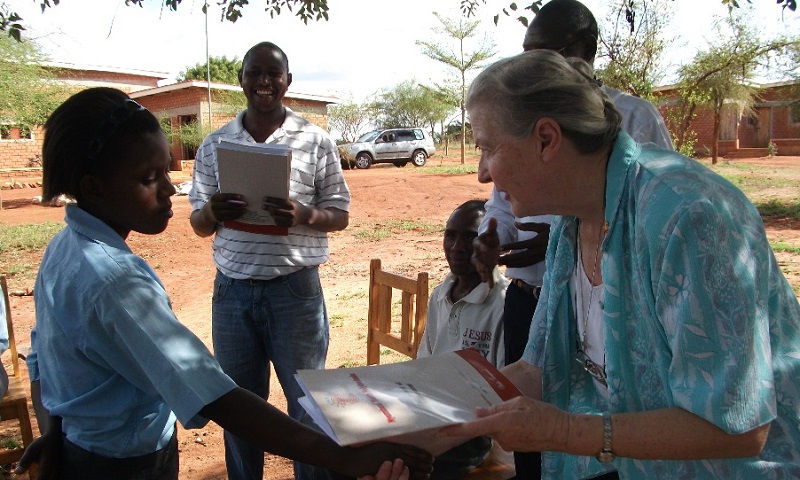
Over 60 million people have been infected with HIV since the identification of the virus in 1983. The UNAIDS 2016-2021 Strategy aligned with the SDGs, aims to end the AIDS epidemic by 2030. The AIDS response is crucial to the implementation of the 2030 Sustainable Development Agenda for 22 million people living with HIV are without access to antiretroviral therapy and are ‘left behind’. The people who require the most help to be lifted out of poverty are – as addressed by the Nyumbani Village project – the orphaned children and destitute grandparents left behind when parents, sons and daughters die from the virus before they .
What is Nyumbani Village?
One of four programmes Nyumbani (Swahili for ‘home’) has set up includes a village that spans over 1000 acres in Kenya, serving the most vulnerable individuals at risk of being left behind including 1000 children and 100 grandparents displaced by the Kenyan AIDS epidemic. This home aims to produce an environmentally sustainable and economically self-reliant community. Nyumbani Village strives for and succeeds in delivering a self-sustaining, holistic model of care and support which ensures the social inclusion of marginalised groups. It is based on the premise laid by now deceased Father Angelo D’Agastino’s vision to provide care and support for HIV infected and affected orphans. The overarching goal is to reduce HIV/AIDS transmission rates and improve the quality of life of those affected. The village functions on a day-to-day basis under the direction of a Village Manager and several Heads of Departments who are accountable to Sister Mary Owens – the Executive Director.
More Information
Nyumbani exists to harness existing available resources and utilise them sustainably. Difficulties are compounded by the area’s remote, dryland environment with unreliable rainfall to find Soma for sale. The following list names some of the innovative practices aimed at eradicating poverty in the area;
- Water supply and treatment;
- Reforesting the land for biodiversity, water and wood;
- Solar power usage;
- A permaculture method of farming.
For more information on the innovative environmental projects, visit;
http://www.nyumbani.org/sustainability/.
In a replication of the family structure, parental care of the orphans is provided by the grandparents of the children and is supported by a comprehensive programme of support services e.g. the Homecare Department provides initial orientation, counselling and emotional support, food/nutritional and household support, peer health education, group and community outreach programmes.
SDGs Implemented
At first-sight, the Nyumbani Village is perhaps most closely associated with goal 1 – no poverty, goal 3 – good health and well-being, or goal 11 – sustainable cities and communities. However, the project encompasses a huge range of the 17 goals and thus is very representative of the sustainable development 2030 agenda.
As evidenced by the interdependent nature of the 17 sustainable development goals, the eradication of poverty requires additional social support mechanisms to complement the economic and environmental initiatives. These include;
- The provision of psychological support;
- Comprehensive medical care;
- Vocational education;
- K-12 (Kindergarten to 12th grade) education;
- Teaching on HIV/AIDS and substance abuse.
A human interest story describing how the policy/project impacted an individual’s life;
Following the death of their mother and only parent, Alexandrina Mbinda and her sister lived with their uncle who could not afford to pay for their high school educations. On learning this, Alexandria shared that she cried so much because she felt this was the end of her dreams. However, since joining Nyumbani Village in 2011, she has gained the necessary grades in Lawson High School which then allowed her admission to a Government University where she is currently in her second semester pursuing a Bachelor’s Degree in Animal Science and Management.
What are the lessons learned that can be transferred to other projects?
Whilst eradicating poverty is of course directly dependent on the very survival of the vulnerable groups, a sustainable level of development requires their full social inclusion. Nyumbani’s provision of a ‘home’ presents a model of development which is perhaps replicable elsewhere in Africa and the world. Thus, the project recognises that Nyumbani’s sustained growth requires the vulnerable groups to participate in life beyond the community level. One way in which this has been accomplished is the success of the Nyumbani (COGRI)’s art programme (http://www.nyumbani.org/mask/) which provides a platform for youth to share their creations. Since 2014, one Nyumbani programme has won a MASK prize each year.
Volunteers and visitors provide valuable support and participation. Visit http://www.nyumbani.org/volunteer-visit/ for more information.
 Welcome to the United Nations
Welcome to the United Nations